2024 GWM Haval Jolion Lux hybrid review: One of the most affordable hybrids on-sale in Australia and possibly the most annoying
While sales of pure electric vehicles have been increasingly slowly and steadily in Australia in 2024, petrol-electric hybrids have become the next big thing.
Sales are up nearly 80 per cent year-on-year. If hybrid was a stand-alone category within Australia’s VFACTS new vehicle sales data it would be the number four seller overall behind only small and medium SUVs and 4×4 utes.
Which helps explain why the Chinese brand GWM Haval has doubled down on hybrids in its compact Jolion SUV line-up by adding petrol-electric models and cutting prices.
READ MORE: Cancel that Toyota Hybrid order? 2023 Hyundai Kona Hybrid to launch with specs that rival the Corolla Cross and C-HR
READ MORE: Take a hike: Big bump in price for top-selling 2025 MG ZS Hybrid+ but more affordable versions on the way
READ MORE: Hybrid SUV price attack! Look out Toyota Corolla Cross, updated GWM Haval Jolion slashed by $4000
2025 GWM Haval Jolion Lux price and equipment
For 2024 GWM increased the Haval Jolion hybrid line-up from two to three while dropping the petrol models from four to two.
The mid-spec Jolion Lux hybrid (HEV in Haval-speak) we’re testing here is now priced at $34,990 drive-away.
That is pretty appealing even before you consider this is a sizable vehicle for the compact class at 4470mm long, which makes it family-friendly transport.
Further amplifying GWM’s commitment to its updated hybrid Jolion, it received a sizable exterior makeover the petrol model missed out on.
So the glasshouse is reprofiled, there’s a bunch of new sheetmetal, as well as new LED headlights and tail-lights and revised bumper.
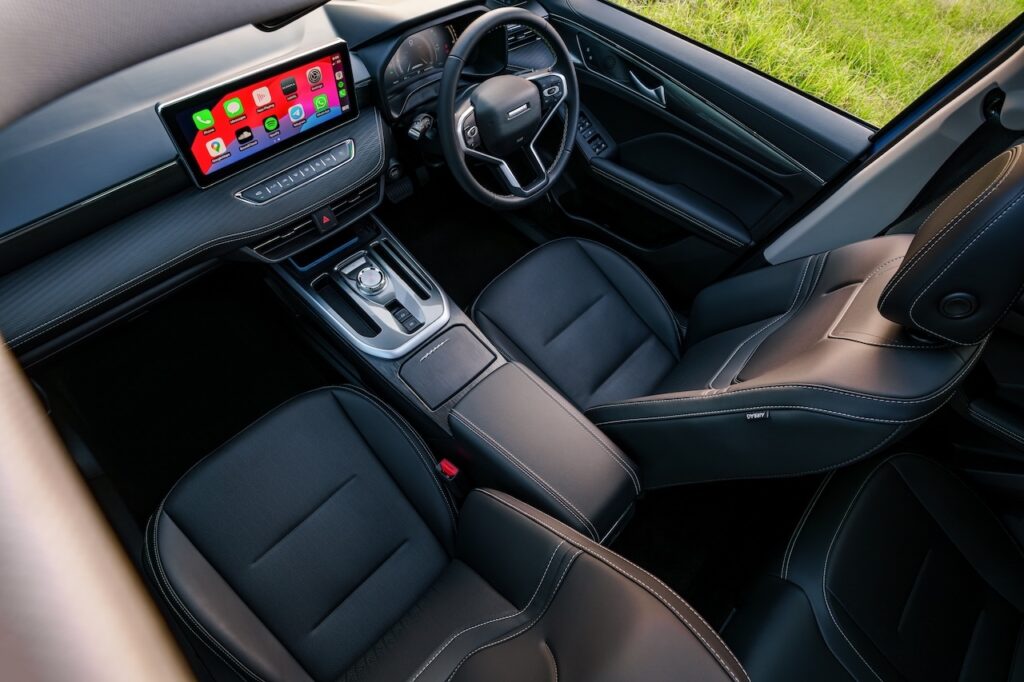
Under the skin the old torsion beam rear axle’s been swapped out for an independent set-up – again, hybrid only – and that’s big deal at a mid-life makeover and speaks to the ability of the Chinese brand’s ability to get things done.
However, the powertrain remains the same. It combines a 1.5-litre four-cylinder naturally-aspirated petrol engine and an electric motor for a pretty healthy dollop of power and torque that drives the front wheels via a two-speed transmission.
The high-voltage battery is only about 1.6kWh and sits under the boot floor. Which means, sadly, there is no spare tyre.
Key equipment the Lux does get includes 18-inch alloy wheels, a 12.3-inch colour infotainment touchscreen with Apple CarPlay and Android Auto connection, a seven-inch digital instrument panel, dual-zone climate control, a six-way powered driver’s seat, front seat heating and very vinyl-looking faux leather seat trim.
No Jolion gets embedded satellite navigation, while wireless smartphone charging, a head-up display, ambient lighting and a ventilated driver’s seat are added further up the range.
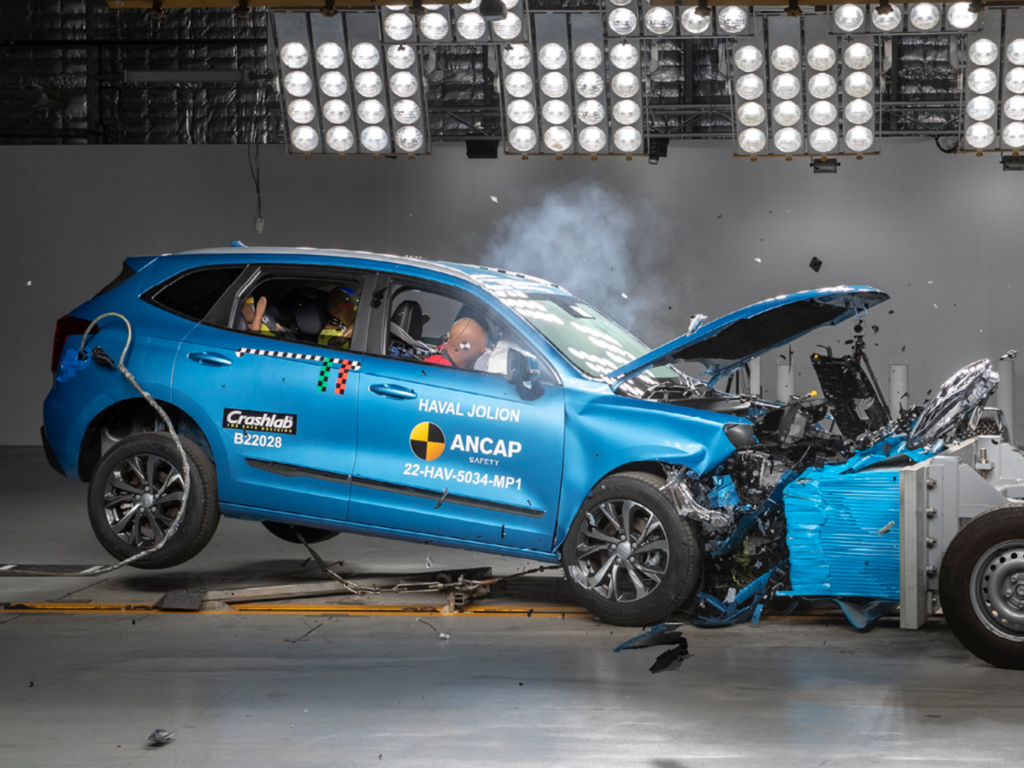
The Jolion range comes with seven airbags and a five star ANCAP safety rating based on 2021 testing.
It also includes autonomous emergency braking, adaptive cruise control, lane departures warning, lane keep assist, rear cross traffic alert and rear parking sensors. For some reason there are no front parking sensors at this level.
The Jolion hybrid comes with a seven-year/unlimited km warranty, an eight-year/unlimited km battery warranty, five years roadside assist and five years capped price servicing.
2025 GWM Haval Jolion Lux: What we think
If you want to understand the immense yet uneven capability of the Chinese car-makers then the 2025 GWM Haval Jolion Lux encapsulates it.
The size for the money is outstanding. You can comfortably fit tall passengers in both rows, although it might be a squeeze to fit three six-footers across the back seat.
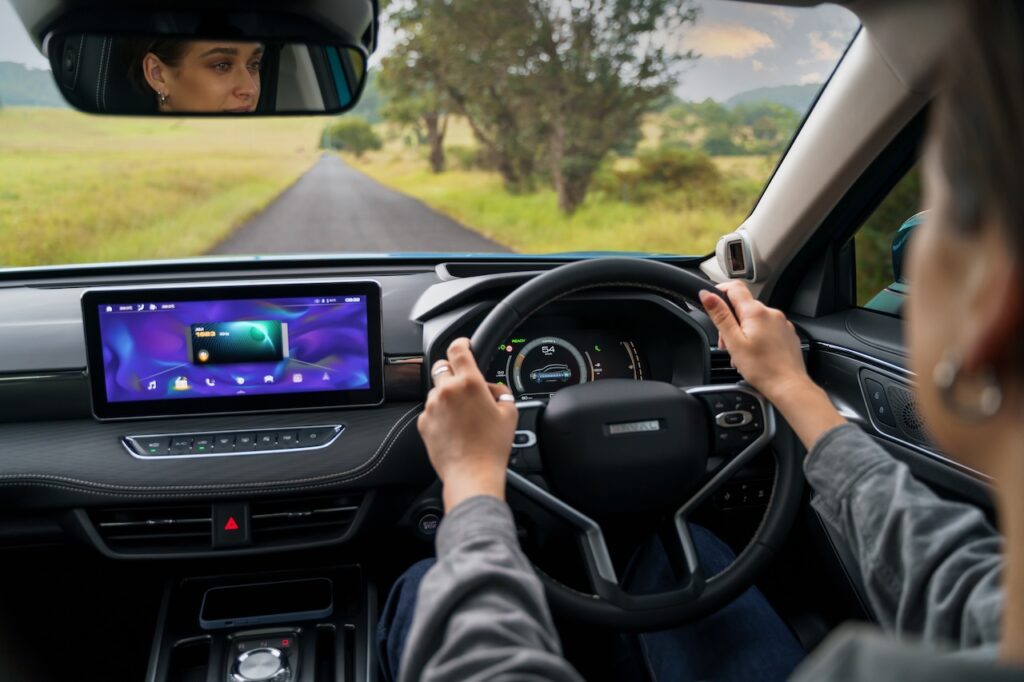
Kids are going to have oodles of space back here and they are also going to be looked after with features including map and door pockets, a fold down armrest, adjustable air-con vents and two USB-A outlets.
But head forward and the Jolion Lux is even more impressive. The presentation is modern and appealing and looks more premium than the price would suggest.
There are nice touches here; the steering wheel now adjusts for reach as well as rake and there are substantial storage opportunities including a big space under the bridge centre console.
But get to the infotainment and that visual appeal clashes with practical useability.
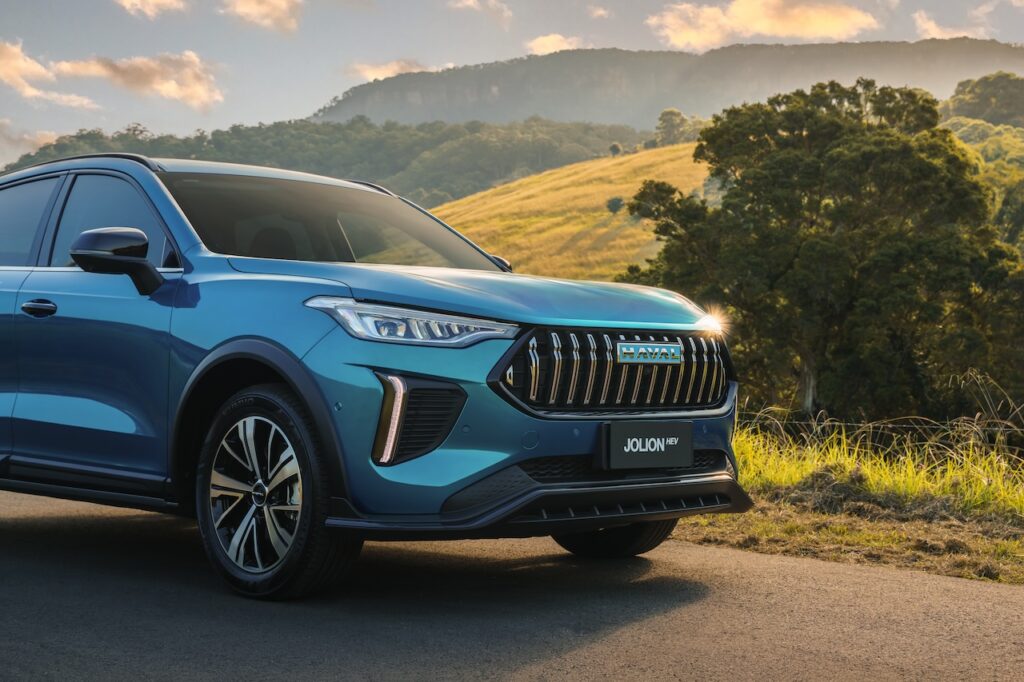
The limited number of buttons on the dashboard mean most functions must be controlled through the touchscreen. This gets very annoying because the amount of steps required to do stuff is excessive.
It also turns out the boot size has been reduced in the new Jolion hybrid to just 255 litres. It looks bigger to the naked eye, but isn’t as big as many rivals.
The driving experience also suffers compared to those rivals. The fundamentals are acceptable. The Lux rides comfortably and has conservatively decent handling, although the electric-assist steering is a bit vague and heavy.
But what really impairs the experience is the intrusive safety aids such as driver monitoring and lane keeping, which are just too obvious and bing-bongy in their interference.
Added to the issue is the complexity of turning them off through various screen menus and sub-menus and having to do a lot of it every time the car is started.
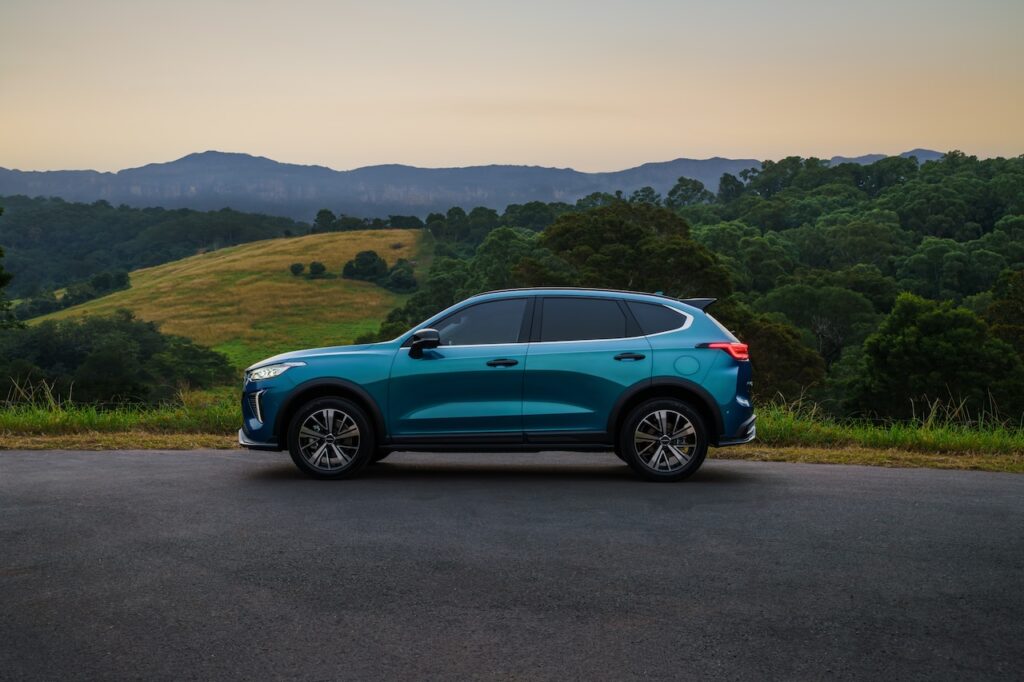
The Jolion’s been criticised since its 2021 launch for this issue. It’s actually a sub-sector of the wider issue of clunky screen-based controls that Chinese cars seem to revel in.
By comparison, the unchanged powertrain delivers a fuss-free experience.
It is a spritely if not strong performer. The electric motor provides pulling power in stop-start driving that helps smooth the experience out. But the powertrain doesn’t run for too long on electricity alone without the ICE kicking in.
It is odd sometimes when the engine is revving hard to recharge the battery while the car is trickling along at slow speed. Thankfully, the battery does a good job of cycling charge, otherwise a pretty weedy engine would be dragging this 1602kg vehicle around. No fun for it or you.
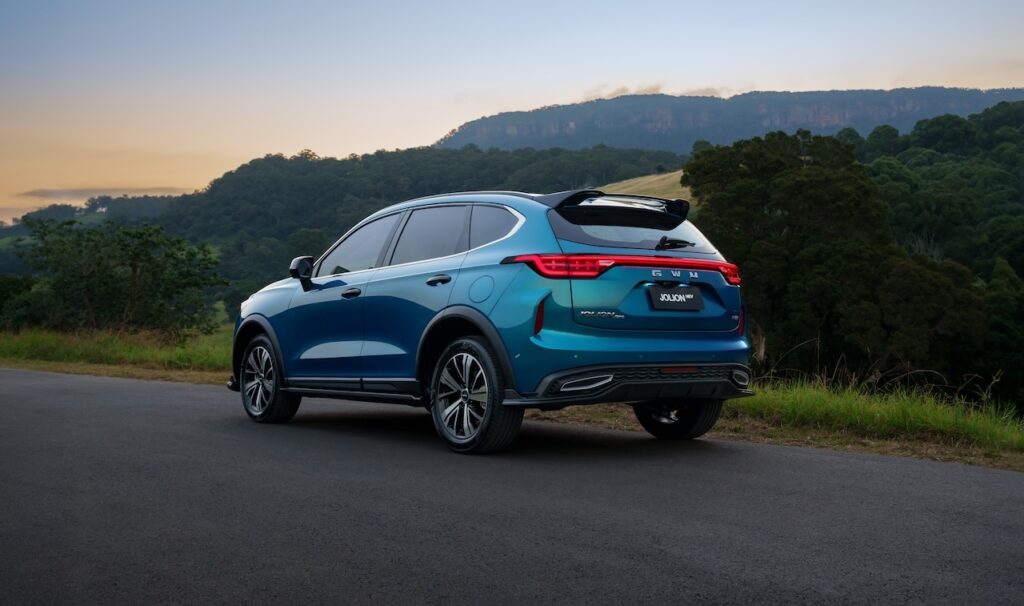
The fuel consumption claim – on the cheapest 91 RON fuel – proved to be only mildly optimistic at 5.1L/100km versus our 6.4L/100km result.
This isn’t in the territory of the Toyota Corolla Cross, but it is pretty decent.
2025 GWM Haval Jolion Lux: Verdict
The price, the hybrid technology, the equipment, the interior design, the interior space. These are all real assets of the 2025 GWM Haval Jolion Lux hybrid.
It helps explain why Jolion has climbed to number three in the small SUV segment, behind only the Hyundai Kona and MG ZS.
But as good as the Jolion is on paper and standing still, it is fussy and annoying to drive.
Its exasperating desire to constantly interfere and then be laborious to quell is fixable by tuning.
It’s immensely frustrating GWM Haval has chosen to do nothing about this while making so many other improvements to the Jolion hybrid.
SCORE: 3.0/5
2025 GWM Haval Jolion Lux specifications
Price: $34,990 (drive-away)
Basics: Petrol-electric, 5 seats, 5 doors, compact SUV, FWD
Range: Zero to very little on electricity
Battery capacity: 1.6kWh
Powertrain: 1.5-litre four-cylinder
Output: 140kW/375Nm
Transmission: 2-speed auto
Fuel: 5.1L/100km (ADR)
CO2: 125g CO2/km

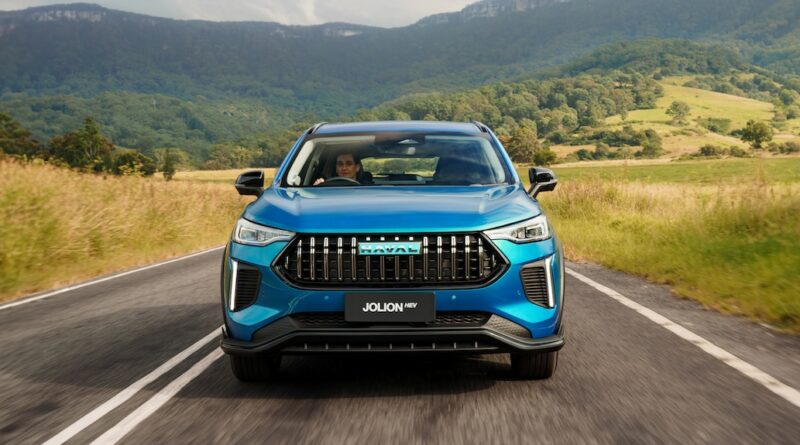
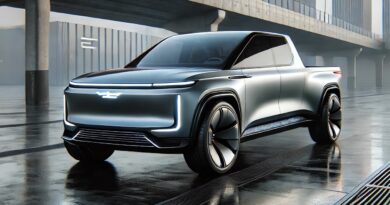
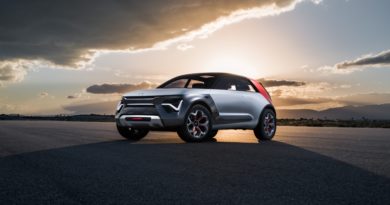

This review was ridiculous. It doesn’t matter what GWM does with this car. Reviewers will always whinge about the thing that every new car has which is the safety features like lane keep assist etc and driver fatigue cameras but didn’t tell you how easy it is to turn these things off or adjust them Without having to go through menu after menu like this review had claimed. Also the steering has three different settings to choose from but it seems most reviews. Don’t know how or can’t be bothered to organise these things in settings before they start to drive the car for the first time because most settings do not have to be changed once they are set at the beginning.